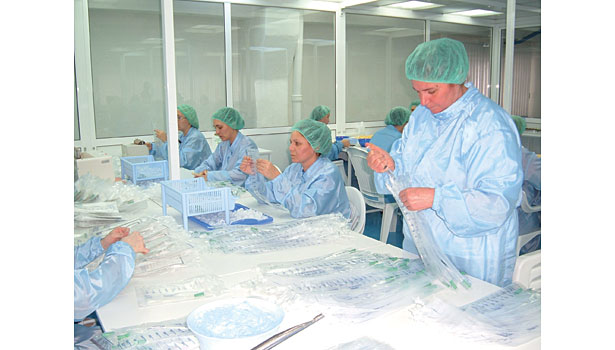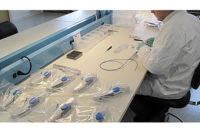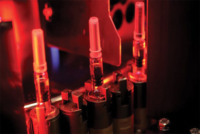Sterilization processes can influence medical device design

The FDA’s design controls standard is intended to help medical device companies cover all the bases when designing and manufacturing new products. Photo courtesy Sanofi-Aventis U.S. LLC
Medical device engineers have many considerations when designing an assembly. Safety and effectiveness are top priorities, of course, followed closely by cost. One important factor that is sometimes overlooked is sterilization. How will the device be sterilized? How will the materials be affected?
Such questions are best not left to the last minute, advises Tom Ryder, president and CEO of Genesis
Plastics Welding, a contract manufacturer that specializes in welding thermoplastic films, fabrics and foams. Based in Fortville, IN, the company has assembled a variety of medical devices, including compression sleeves, blood pressure cuffs, fluid bladders and oxygen hoods.
As a contract manufacturer, Ryder has seen it all, from customers at established OEMs with fully developed designs to entrepreneurs with the proverbial drawing on a cocktail napkin. In either case, how the product will be sterilized is one of the first issues he raises.
“That can affect the product all the way up the supply chain,” says Ryder. “The customer might start by designing the product for an optimal moisture vapor transmission rate. So, we might specify a nylon or polypropylene—only to find out later that the product needs to undergo sterilization with gamma rays, and the process could degrade the film, making it brittle and less functional. That’s a terrible thing to find out after you’ve completed your 510(k) submission [for FDA approval].”
There are many ways to sterilize medical devices: dry heat, autoclaving, irradiation or gaseous chemicals. Each material reacts differently to each process. Thus, when designing a medical device, engineers need to choose a material that best meets the design’s functional requirements and sterilization requirements. There’s no one “universal” material or sterilization process.
Which material is best? Which sterilization process is best? “It’s a chicken-or-the-egg question,” says Ryder. “Step one is really the product’s performance requirements. That narrows down the materials, and that, in turn, narrows the choices for sterilization method.”
In some cases, sterilization processes can alter a material’s physical properties. For example, some plastics lose tensile strength when exposed to radiation; others become brittle or lose impact strength. In other cases, the effects of sterilization are merely cosmetic. For example, some plastic films will turn yellow when they are sterilized.
“You need to be sure that coloring is OK,” says Ryder. “The product’s performance is not affected, but it may be a problem from an aesthetic point of view.”
Fortunately, medical device assemblers shouldn’t need to guess about how a material will react to a particular sterilization process. In most cases, suppliers will have already done some sterilization testing on their materials.
Such information doesn’t obviate the need for testing the complete assembly, however. In addition, new materials—or new uses for old materials—will require more thorough testing.
“There are some films that are creeping into the medical device business that didn’t start out as materials for medical devices. They may have originally been designed for, say, food packaging, and ended up in medical devices,” warns Ryder. “Those materials may not have been tested for electron beam or gamma ray sterilization, and that’s when you can get surprised.”
Ryder also advises engineers not to overlook how sterilization might affect auxiliary materials in the product—things like adhesives or connectors. “Ninety-nine percent of your product might be made of polyethylene, but if there’s one small part that’s made of something that is affected by sterilization, it can still make the product fail. The more materials you have in your product, the more complications you might have.”
Packaging is another issue to consider. If the device will be sterilized with a gaseous chemical, it’s important that the packaging be made from a gas-permeable material, such as Tyvek. A device packaged in a nonbreathable material will not get sterilized.
Looking for a reprint of this article?
From high-res PDFs to custom plaques, order your copy today!






